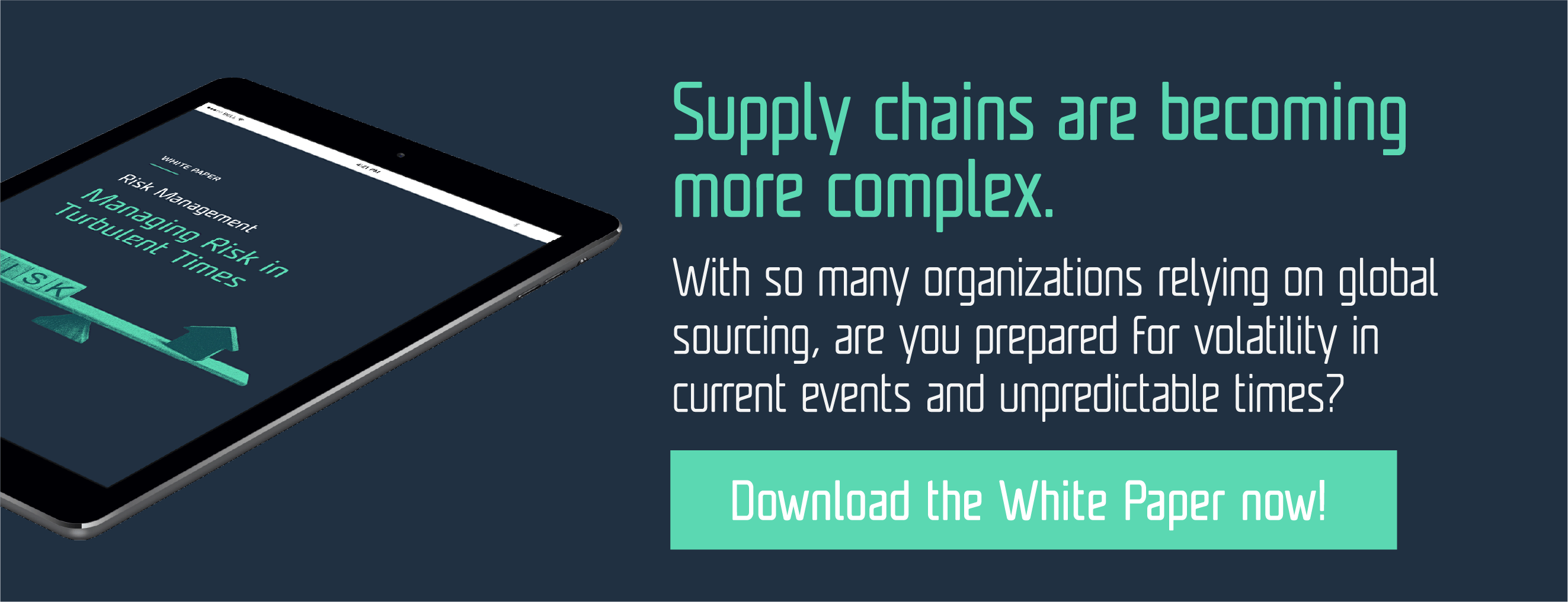Supply Chain Risk: How to Manage the Unavoidable

Nothing is without inherent risk. Even something as simple as getting out of bed or pouring coffee in the morning poses some risk. But since these are small, we pay little or no attention.
In a supply chain professional’s life, however, the consequences of risks they face may range from costly to ruin.
The outbreak of COVID-19, lockdowns, inflation, unprecedented weather phenomena, the war in Ukraine, and unpredictable consumer demand patterns have left the global supply chain in absolute turmoil. Supply chain managers have been scrambling throughout the past few years, trying to steer an all-but-sinking ship through a seemingly endless sea of obstacles.
Most of these events were unpredictable and entirely unavoidable, which begs the question, “How is a company supposed to manage these risks?”
Understanding the Risks in Your Organization
To better manage risks, it’s necessary to understand them. While this sounds straightforward enough, risk assessment can quickly become a mammoth undertaking. The longer the supply chain, the more complicated the risk assessment becomes.
It’s not just about knowing the flow of materials and goods through your channels. To correctly manage risk, you’ll have to understand the supply chain of your suppliers and suppliers. When attempting to put together a comprehensive risk assessment, it is best to outsource the project to a third party that specializes in such services.
While preparing for every eventuality is impossible, risks can be broken down into broader categories and subsequently managed. The following are seven basic types of supply chain risks to consider:
- Financial: This can range anywhere from unfavourable shifts in currency value or exchange rates to supplier bankruptcy.
- Scope of Schedule: Poor communication between planning and labour can pose a risk to timelines and often carry financial ramifications.
- Legal: Legal risks span a gamut of different issues, from contractual interpretations to customs navigation, each of which can impose other consequences.
- Environmental: As consumers become more environmentally conscious, logistic professionals must consider the environmental impacts caused by material sourcing.
- Sociopolitical: Governmental or regulatory changes can affect supply chain efficiency, while major events like the Russia / Ukraine war can wipe a supplier out entirely.
- Project Organization: Not having the right people or equipment in the right place at the right time can cause significant delays and other issues.
- Human: Human risks can range from sickness to strikes from significant transportation service providers. One of the most complex risks to manage as it’s the most unpredictable.
There is an impossible amount of variables to consider, as there is no way of knowing what event will trigger some major disruptions further down the line. As there is no true omniscience, some best practices work well as “catch-alls” and should be considered for every risk management plan.
Risk Management Strategies Every Company Should Consider
Regardless of the size of your organization, having sound risk management strategies should always be a priority. Not only does it help by having a plan in place should the worst come to pass, but having a deep insight into your operations provides the key to unlocking higher levels of potential and efficiency, which can lead to more substantial profits and growth.
Again, there isn’t a “one-size-fits-all” approach to risk management. The best risk management plans will encompass several different strategies, including but not limited to managing suppliers, utilizing the latest technologies, varying sources, and carrying a safety stock.
Employing these strategies and building resilience into your supply chain and daily operations can help ensure that your company is protected no matter what unforeseen event comes to pass.
Please download our free white paper for a more in-depth look at these risk management strategies (and others).

